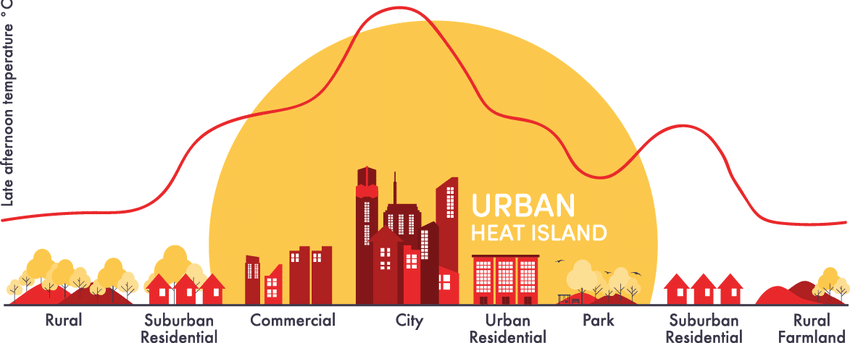
The phrase ‘urban heat island effect’ was coined by scientists to describe the impact that urbanisation has on the climate of where humans live. Today, some 55% of the world’s population lives in urban areas. All these are subject to the urban heat island effect phenomenon. Felt particularly in summer, urban areas tend to be some 3°C to 4°C hotter than rural areas. Urban areas are covered mainly with concrete, metal and asphalt. These absorb heat more effectively at-casinos.com/. Rural areas, on the other hand, are covered mainly with fields, trees and soil. These absorb less of the incoming solar radiation. As a result, urban areas are always hotter. The difference arises from the fact that materials commonly used in urban areas are better absorbents of heat, and have poor radiative properties (as they tend to absorb rather than reflect the incoming solar radiation) when compared to the land cover normally found in rural areas. The effects are pronounced more at night. The concrete, metal and asphalt in urban areas release the trapped heat slowly by night. The fields, trees and soil trap less heat, and release this more rapidly. As a result, urban areas are also far hotter than rural areas at night as well. The more intense traffic and a higher density of air conditioning units in urban areas adds to the heat. Levels of air pollution in cities are greater too. This enhances the greenhouse effect, and thus traps more heat, resulting in even hotter temperatures.
Apart from the obvious effect on temperature, the urban environment also has an impact on local wind patterns, the development of clouds and fog, relative humidity and precipitation. Urban areas covering a significant area have been linked to an increase in localised thunderstorms. This could be attributed to stronger convection because of an increase in temperature.
Measures to mitigate the urban heat island effect normally include the establishing of green roofs and the use of a lighter colour for surfaces.



0 comments
Write a comment